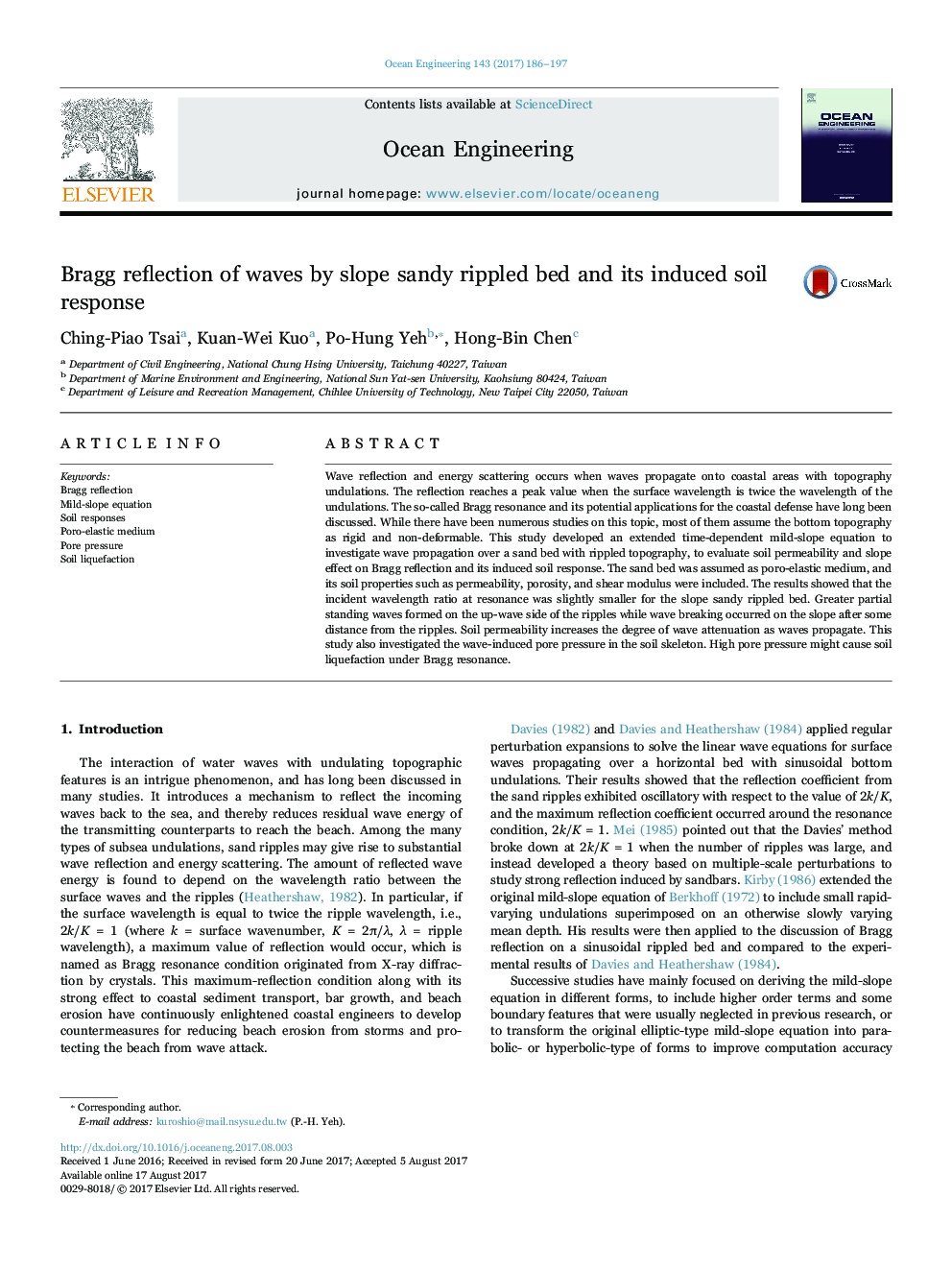| Article ID | Journal | Published Year | Pages | File Type |
|---|---|---|---|---|
| 5474185 | Ocean Engineering | 2017 | 12 Pages |
Abstract
Wave reflection and energy scattering occurs when waves propagate onto coastal areas with topography undulations. The reflection reaches a peak value when the surface wavelength is twice the wavelength of the undulations. The so-called Bragg resonance and its potential applications for the coastal defense have long been discussed. While there have been numerous studies on this topic, most of them assume the bottom topography as rigid and non-deformable. This study developed an extended time-dependent mild-slope equation to investigate wave propagation over a sand bed with rippled topography, to evaluate soil permeability and slope effect on Bragg reflection and its induced soil response. The sand bed was assumed as poro-elastic medium, and its soil properties such as permeability, porosity, and shear modulus were included. The results showed that the incident wavelength ratio at resonance was slightly smaller for the slope sandy rippled bed. Greater partial standing waves formed on the up-wave side of the ripples while wave breaking occurred on the slope after some distance from the ripples. Soil permeability increases the degree of wave attenuation as waves propagate. This study also investigated the wave-induced pore pressure in the soil skeleton. High pore pressure might cause soil liquefaction under Bragg resonance.
Related Topics
Physical Sciences and Engineering
Engineering
Ocean Engineering
Authors
Ching-Piao Tsai, Kuan-Wei Kuo, Po-Hung Yeh, Hong-Bin Chen,
